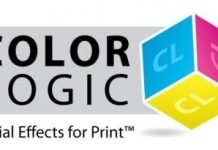
Digital printing on textiles is an amazing option for communicating new ideas in print using fabrics. There is a massive range of possibilities for what you can do when you bring together digital printing and textiles for all sorts of applications, from signage to apparel to interior decorating. The design consideration for outdoor applications like signs or tents and gazebos will be somewhat different from the ones for interior design and apparel, but there are some technical aspects which many digital print projects share. This article will help you understand what you need to take into account when creating designs for digitally printed textiles.
When preparing print projects using digital printers suitable for fabrics and textiles, you can use pretty much the same checklist as for conventional, that is, analog printing like offset, screen or flexo. But if anyone has given you the impression that there are no special technical requirements for digital printing in terms of how the artwork is prepared, they are unfortunately mistaken, or they underestimate the challenges. Well prepared artwork has to take into consideration things like the resolution of images, using the best type of file format for vector-based illustrations and for pixel-based images. Other technical factors such as bleed, trapping, overprint (or not), pattern repeat (if necessary), type of fonts used and so on, should be considered and optimized to get the best results for your project. And then there is color management – not every color can be reproduced in every printer and on every type of substrate. Don’t believe anyone who tells you otherwise because it’s simply not true. If you care about color accuracy in your print project, there are some basics to keep in mind at the outset.

Some common errors in Preflight
The term Preflight was originally used in aviation, dating as far back as 1935. It refers to the checks that a pilot and ground crew do before clearing a plane for take off. Chuck Weger, a consultant within the graphic arts industry, realized as early as 1990 that something similar was needed in handling electronic artwork, before sending it off to be printed. A preflight checklist for print production can be as simple as a written list of ‘don’t forget to check that. . .’, or using special software to go through the files before sending them off to the printer. We’ll come back later to common software available on the market, and what can be done within the Adobe Creative Cloud suite of applications. Don’t panic … it’s all do-able!
Things to watch out for in your artwork preparation
By far the most common error in artwork being sent for production at the printer’s is images that are at a far too low resolution to be printed. While for some large format production, when the printed matter is to be viewed at a considerable distance, you don’t need to adhere to the general rule of around 300 ppi resolution (pixels per inch), you should probably stay well over 100 ppi effective resolution even for textile printing. By effective we mean what the resolution is after you have placed the image and possibly enlarged it in the layout software. If you place and image at let’s say 300 ppi but then enlarge the image 200%, you have halved the effective resolution, and it’s now at 150 ppi in the artwork. If this is to be viewed close up, the image may look slightly blurred. But on the other hand, fabric is by nature a substrate that isn’t entirely smooth, so you might get away with fairly low resolution in the images. But keep an eye in this anyhow. It’s better to get it right before you send the work off to be printed.
Bleed refers to print that has to go completely to the edge of the substrate. It’s the term for when a printed area is supposed to be cut off, but you want the image to go over the trimmed edge. Make sure you have some 3-5 mm bleed on any such image, so you don’t have a gap when the fabric is cut or stitched together either with other parts of a garment or for interior décor, such as cushions which need to have a seamless appearance.
Trapping is the term for when different colors touch in a design, and depending on the characteristics of the ink, you might have a possibly unwelcome change in color appearance in the area where they overlap. If you, for example, have an area with pure yellow and another area of cyan (blue) side-by-side, you will get green of the overlap due to some slight misregistration in the printing process. But luckily most digital printing presses are very precise in how they lay down ink, so in most cases this shouldn’t be a problem. But if in doubt you should check with the prepress department at your contracted printer, and they can advise if compensation for trapping needs to be done in your artwork. Sometimes this is better dealt with in the workflow system used in the prepress department, and if so they will tell you what they plan to do. Either way, ask the question.
How to prepare your artwork
Most print service providers with experience of digital color printing on textiles will offer guidance and sometimes a guide on how the artwork should be prepared for a certain type of production and project. Use those guides when available, and take the time to read them through and ask questions if you aren’t sure. Don’t assume that it will all be fine. We would strongly recommend that you favor print service providers who have taken the time and effort to produce such guides because it shows their commitment to you as a customer, and an ambition to help you achieve the highest possible quality in your printed products.
You should expect some instructions on which file format they prefer for images and logos (vector graphics). For artwork created in Adobe Illustrator, it’s common to suggest that the text in illustrations and logos is converted to vectors. Vectorization converts text into outlines in order to avoid problems with missing fonts in artwork.
You should also expect some instructions from the printer relating to color management, specifically which color profiles they prefer for RGB work, as well as their recommended ICC profiles for CMYK work. If you address colors in your artwork as defined spot colors, you need to be sure if the printer can really handle true spot colors, or if the colors are converted to the color space (ink setup) of the printing device. If spot colors will be converted, you need to check that the colors match your expectation so ask for color-accurate proofs before the final print production.
Many professional designers of artwork for high-end graphic arts production use dedicated software for preflight checks. Among the most well known are Callas PDF Toolbox, Enfocus PitStop and Markzware FlightCheck. If you use Adobe CC you have some basic preflight functions in InDesign, and a ‘light’ version of the Callas PDF Toolbox is embedded in Adobe Acrobat Pro. If you haven’t tried this before it should be worthwhile as there are many fix-ups available in the preflight functions in Acrobat Pro.
Some of the final adjustments and optimizations of your artwork are made in the professional software used in the prepress department. Examples are workflow and Raster Image Processing systems (RIP) from vendors like EFI, with their Fiery RIP series, used by many vendors, among them HP, and the graphics industry preferred RIP across all industry sectors. And there are special versions for digital print on fabrics developed by Ergosoft for Roland DG. But while those RIP systems can do a lot to enhance your artwork, they might not be able to fix serious errors or shortcomings. So learn which key preflight steps you need to pay attention to, and prepare your artwork carefully. In this way you will achieve the top quality end result you hoped for.
Paul entered the graphic arts industry in 1980, first as a typographer and graphic designer, later as production manager. He act as Senior Technical Editor at Digital Dots (www.digitaldots.org) and is one of the founders.
In parallel he lectures part time for the Graphic Arts Departments at Malmö and Copenhagen Universities. Since 2008 Paul is an IRCA accredited auditor for ISO 9001 and ISO 12647 certification. He is also an appointed expert to ISO TC130, the international technical committee responsible for authoring ISO standards for print media production.
















